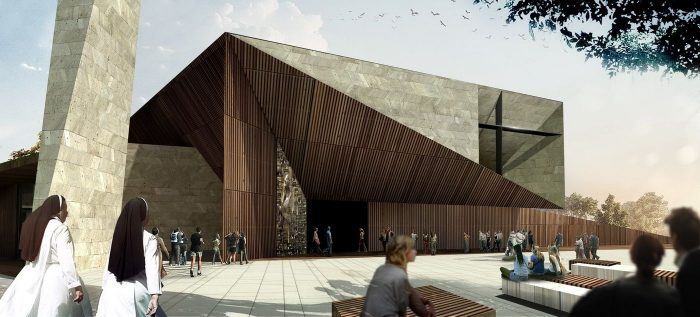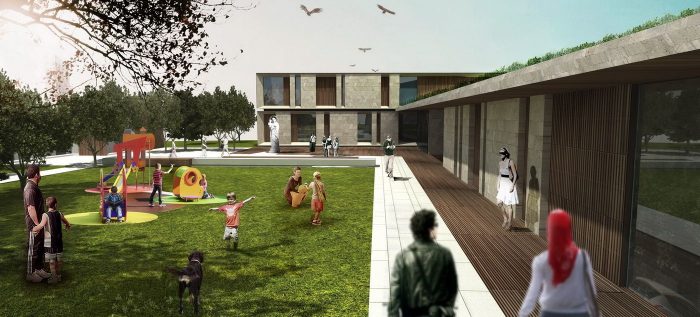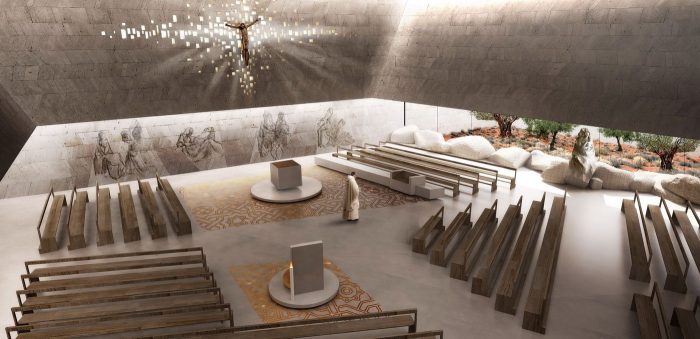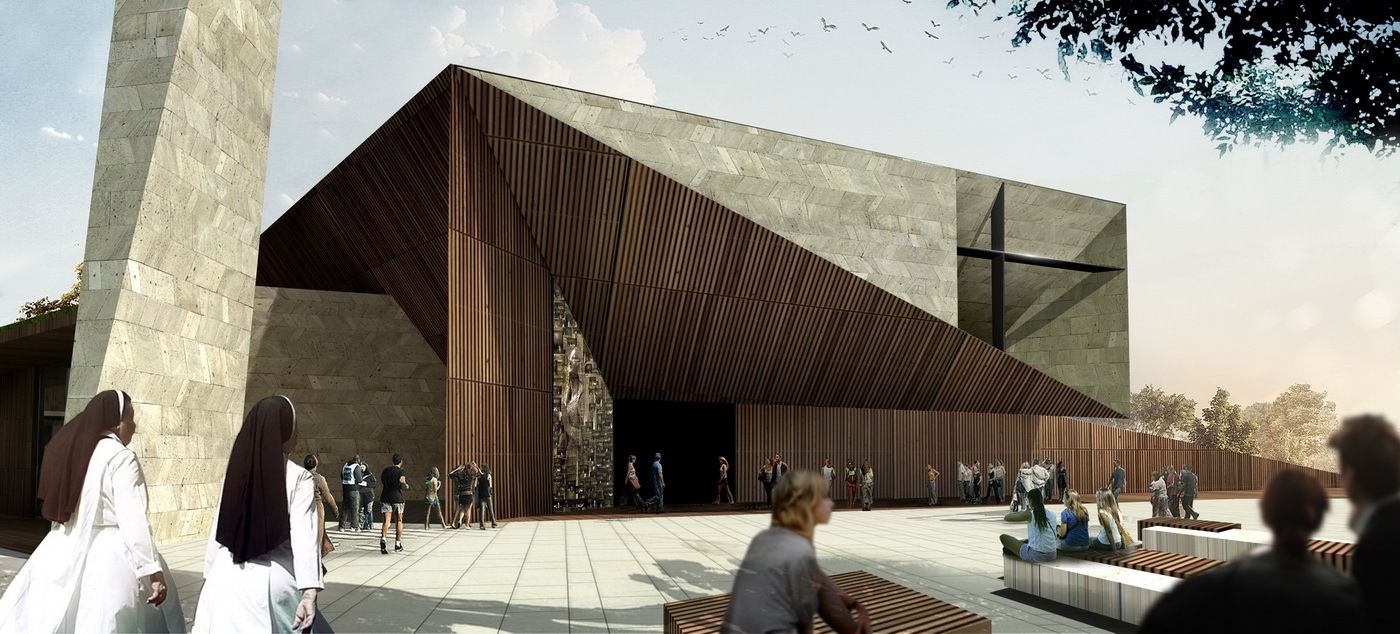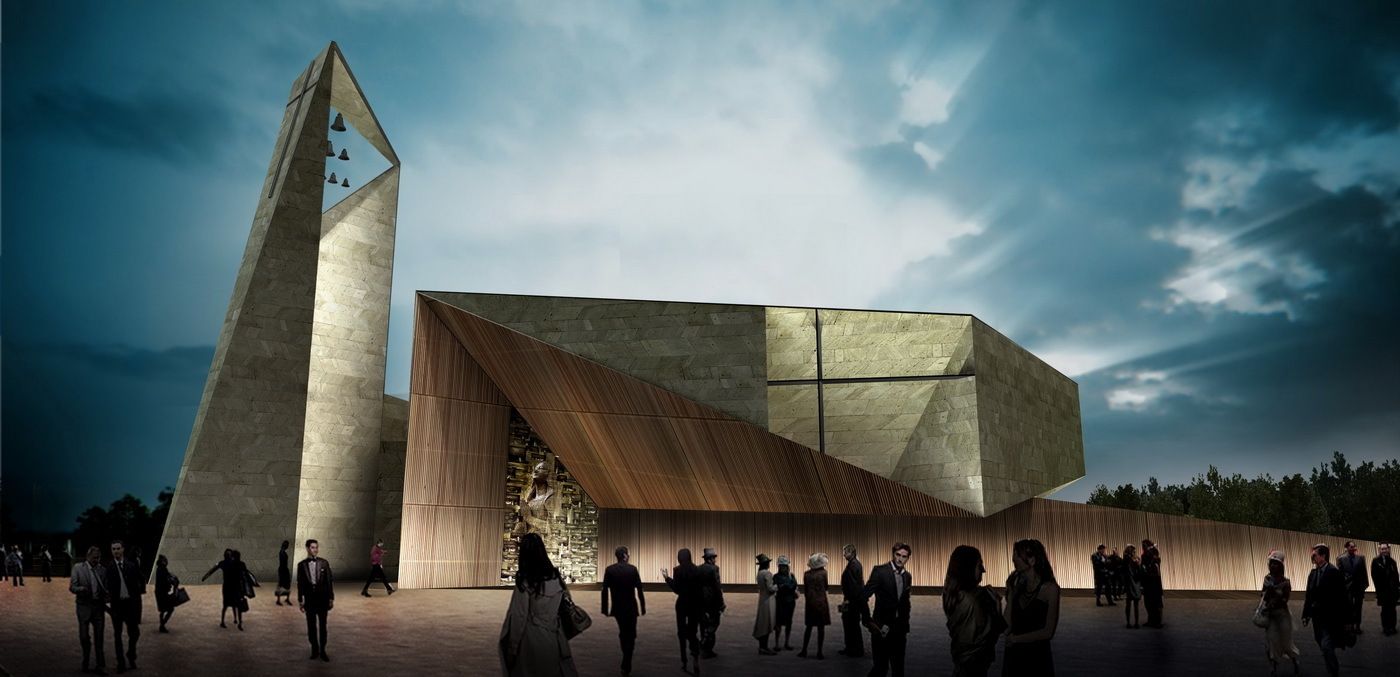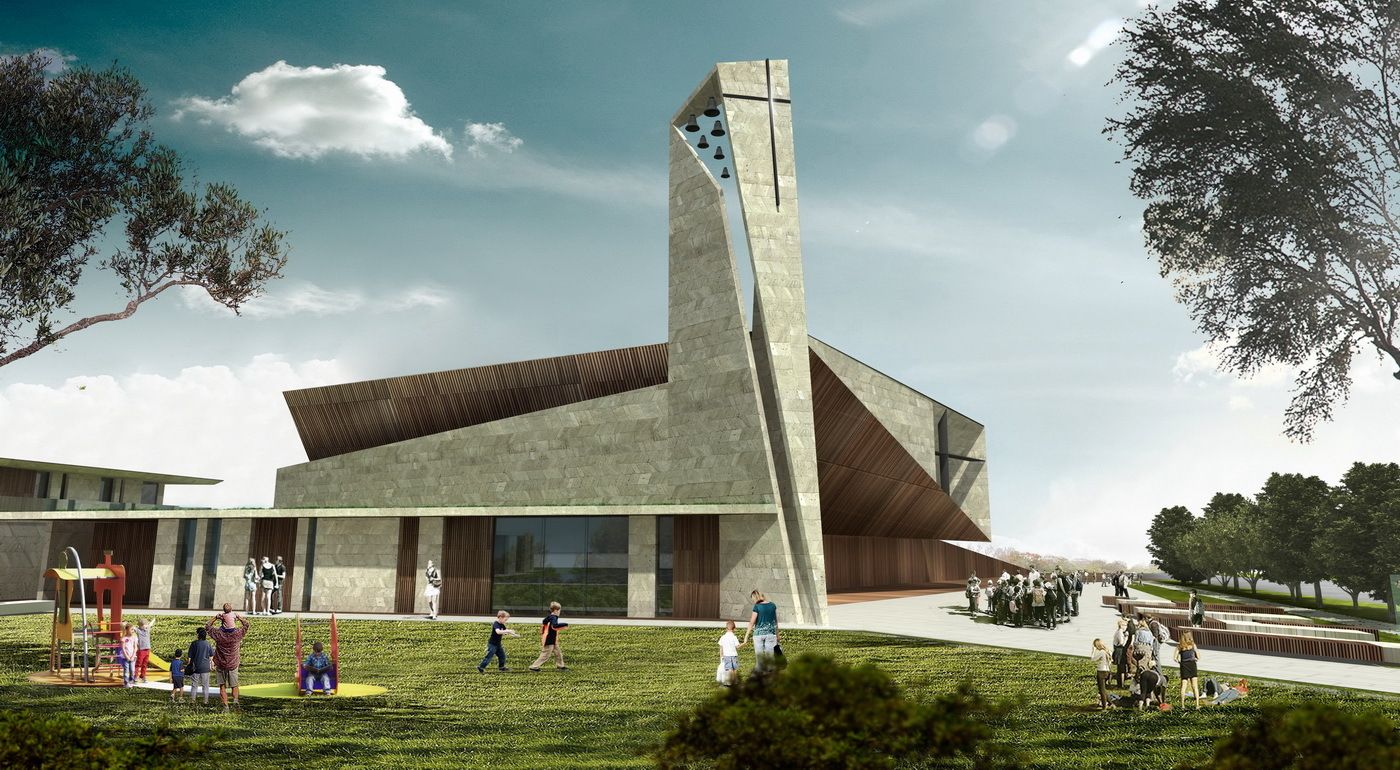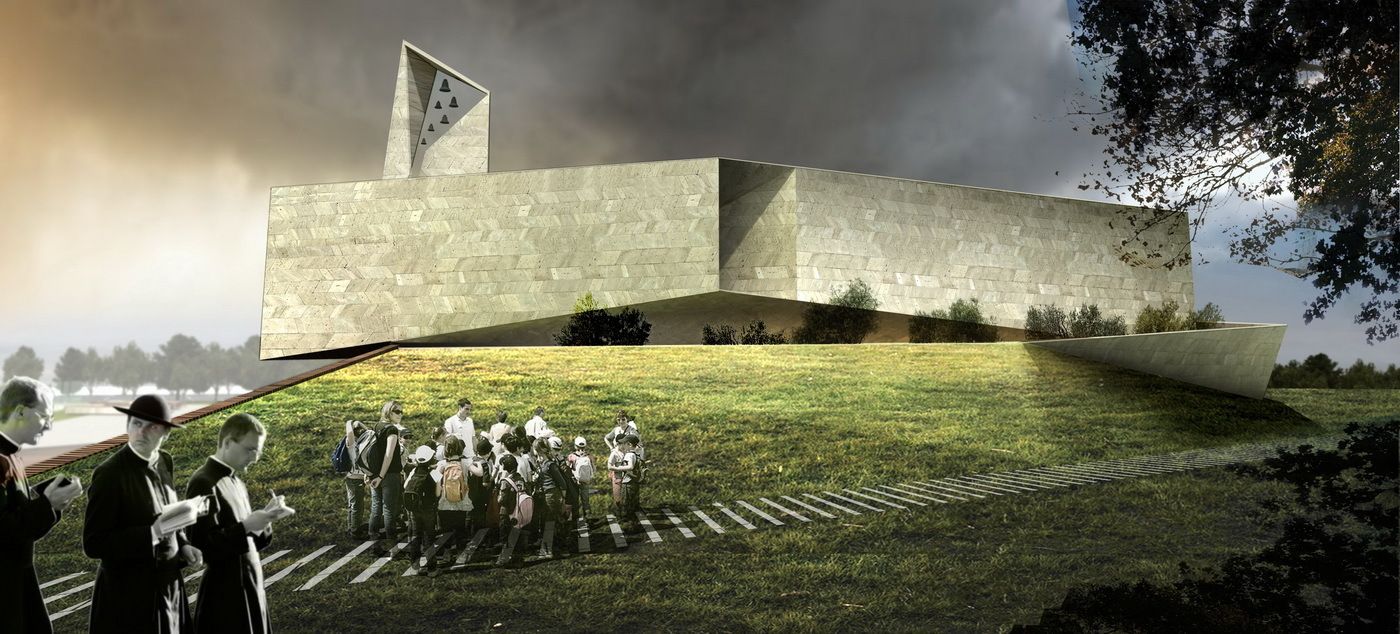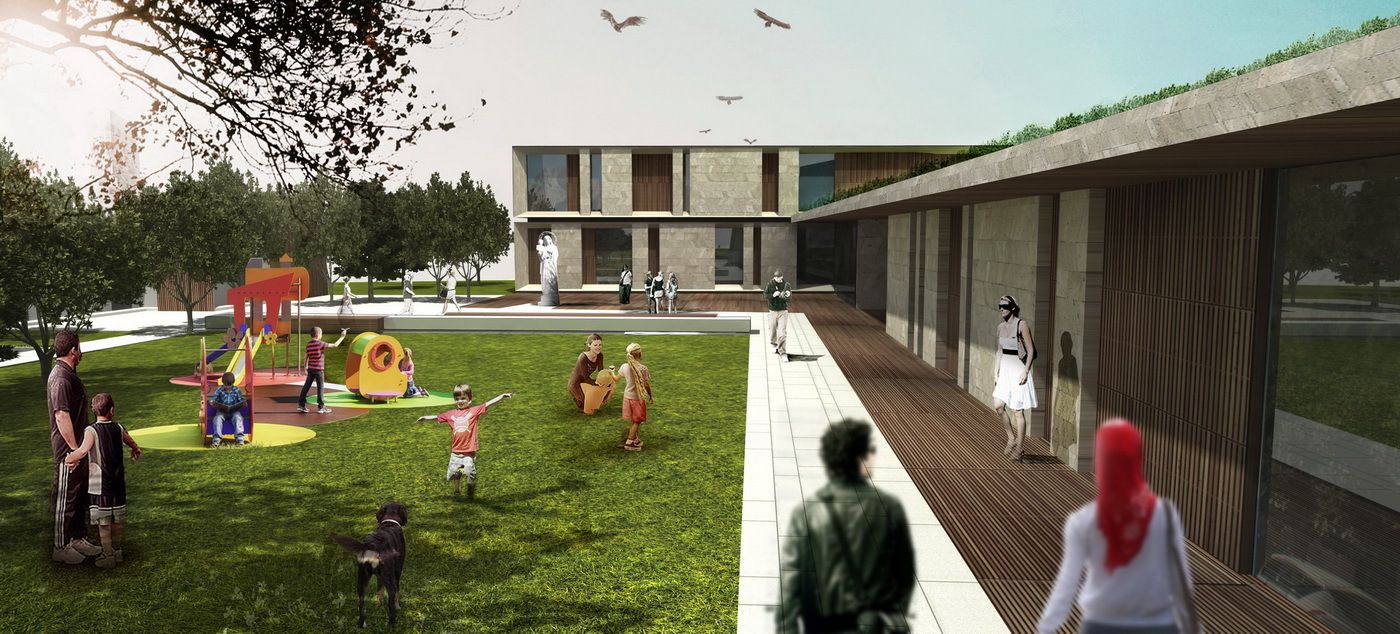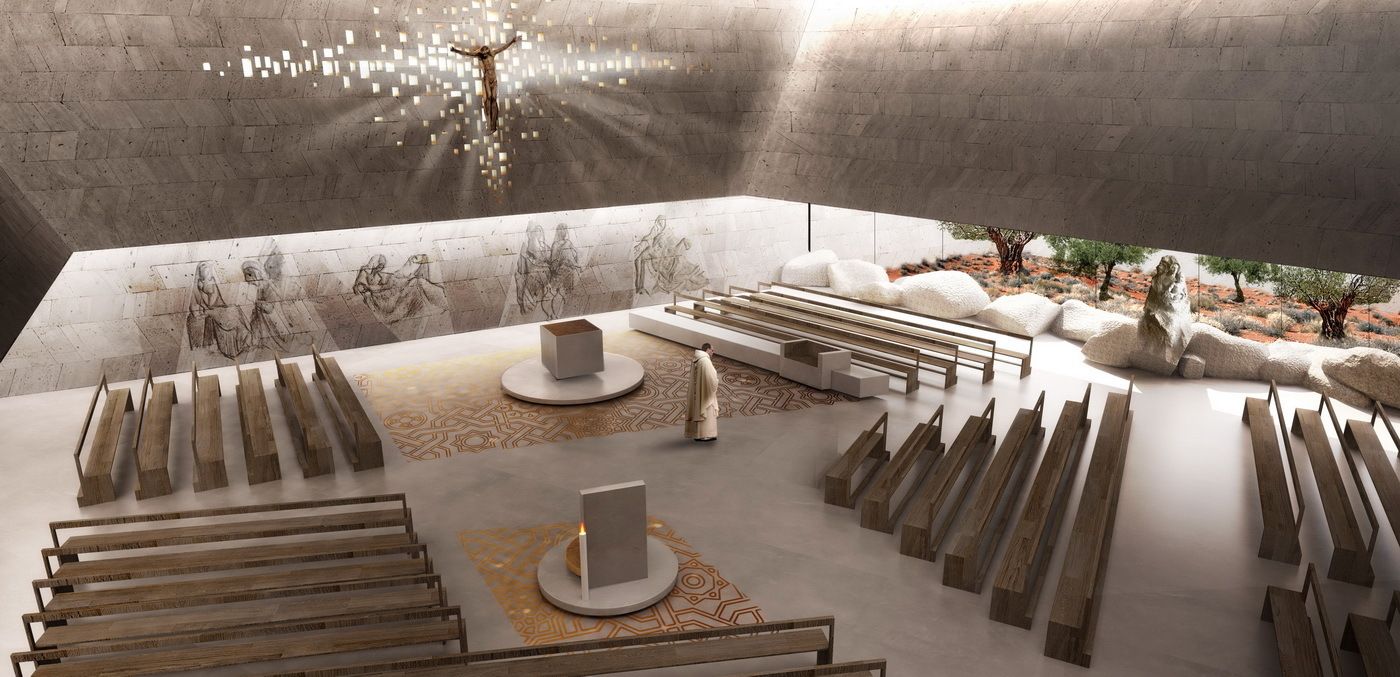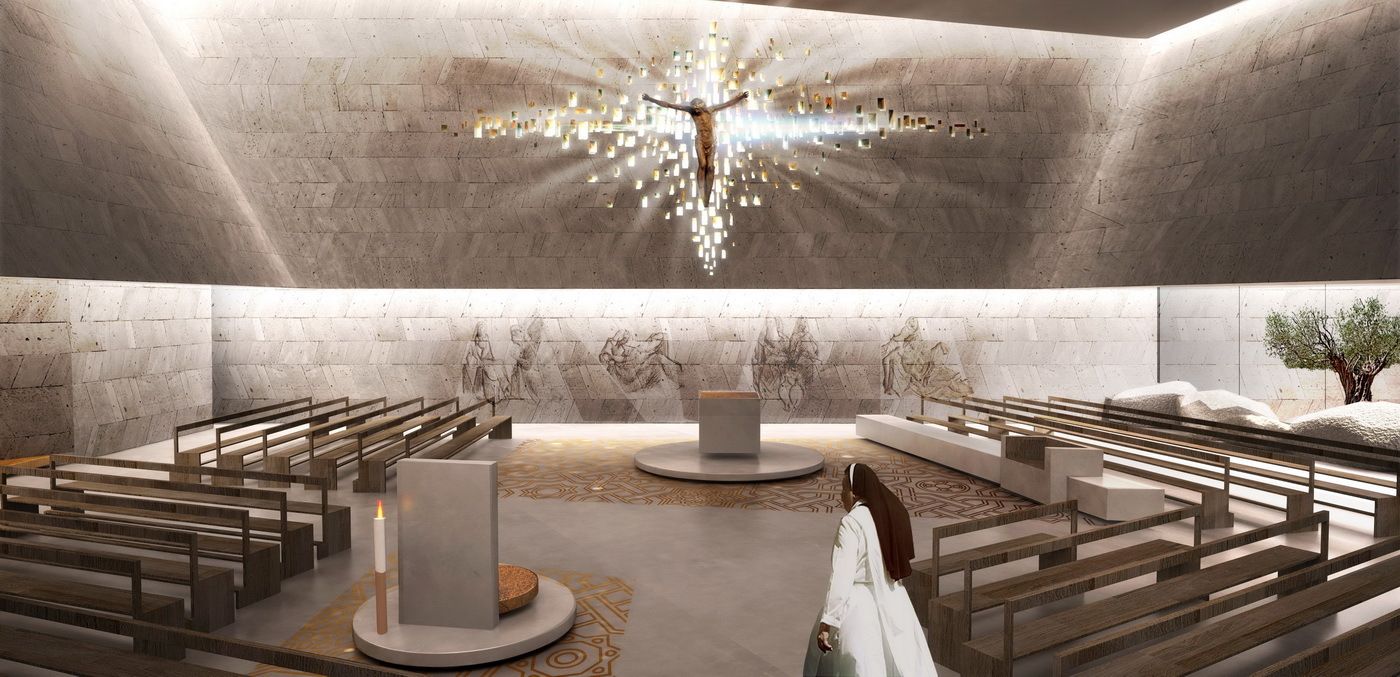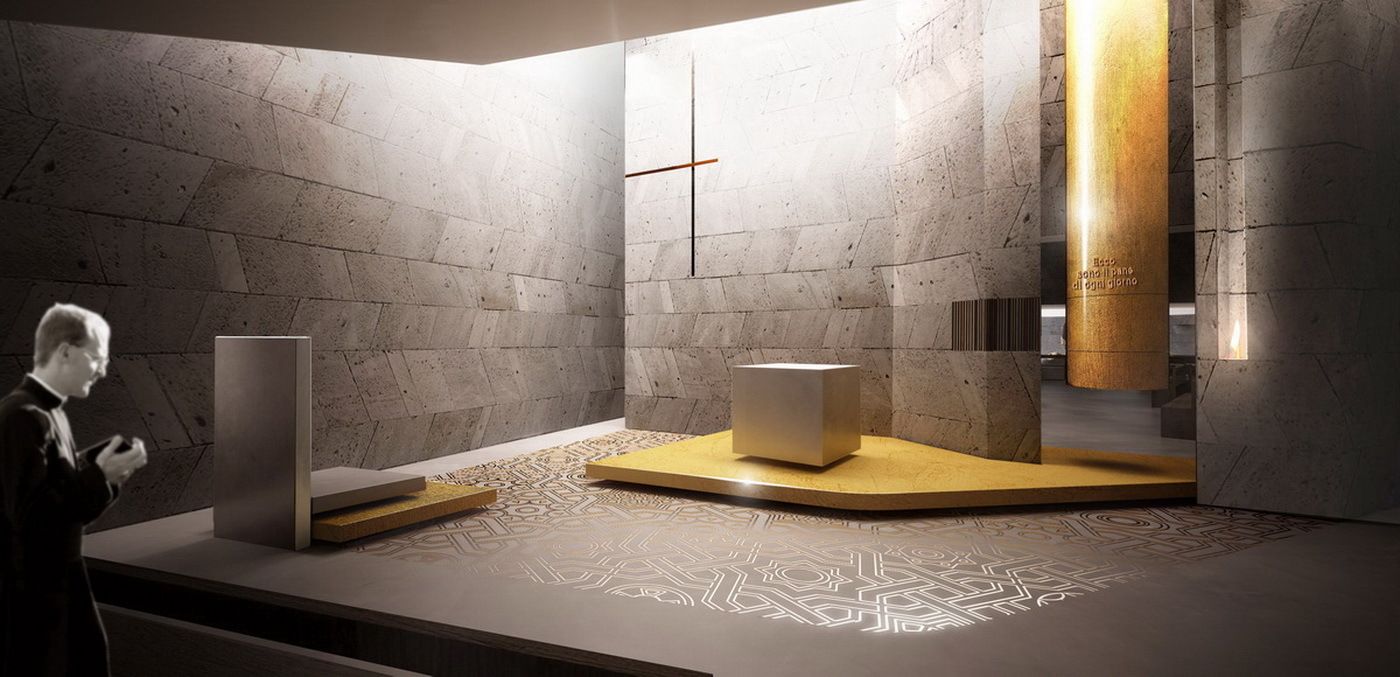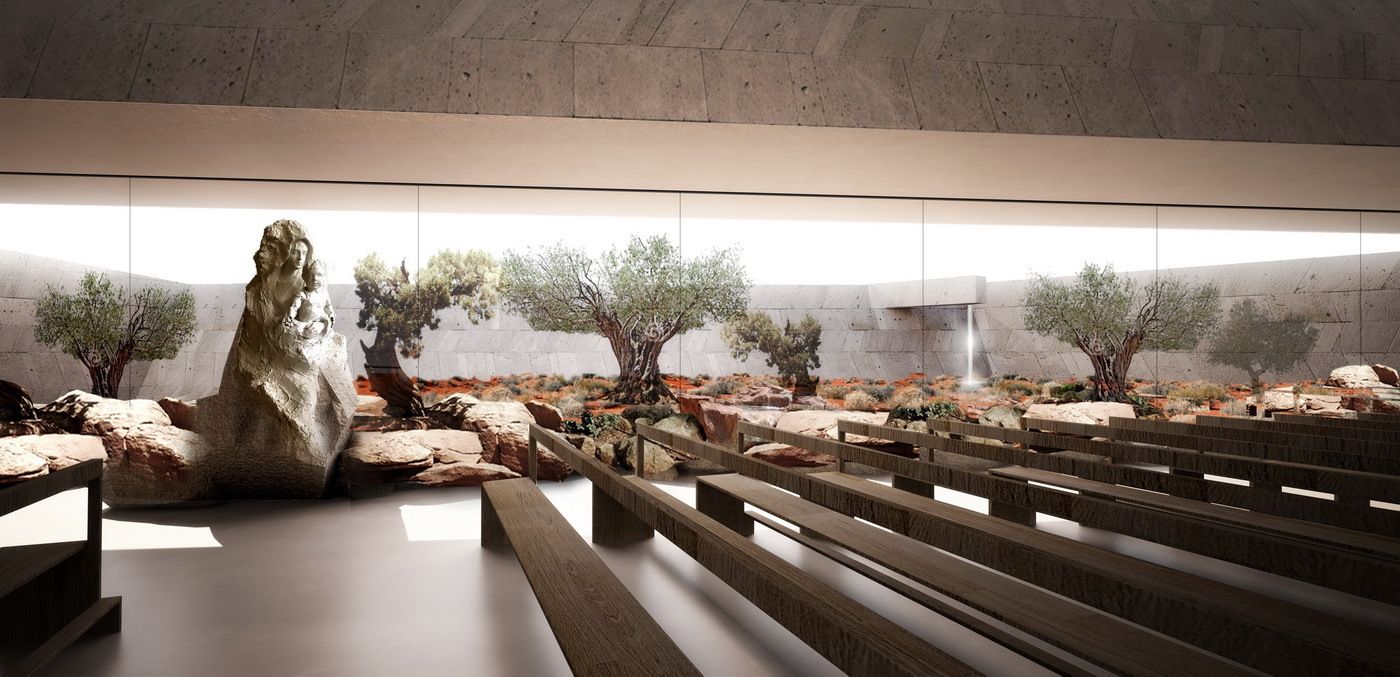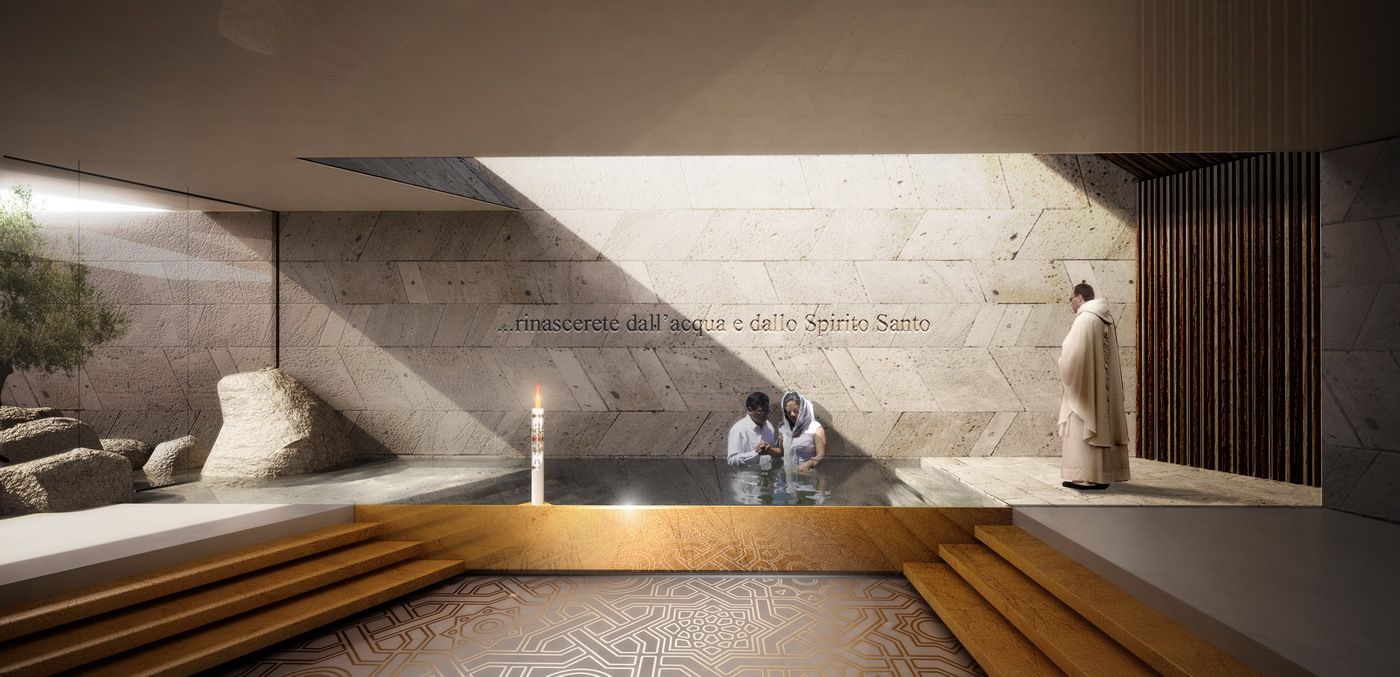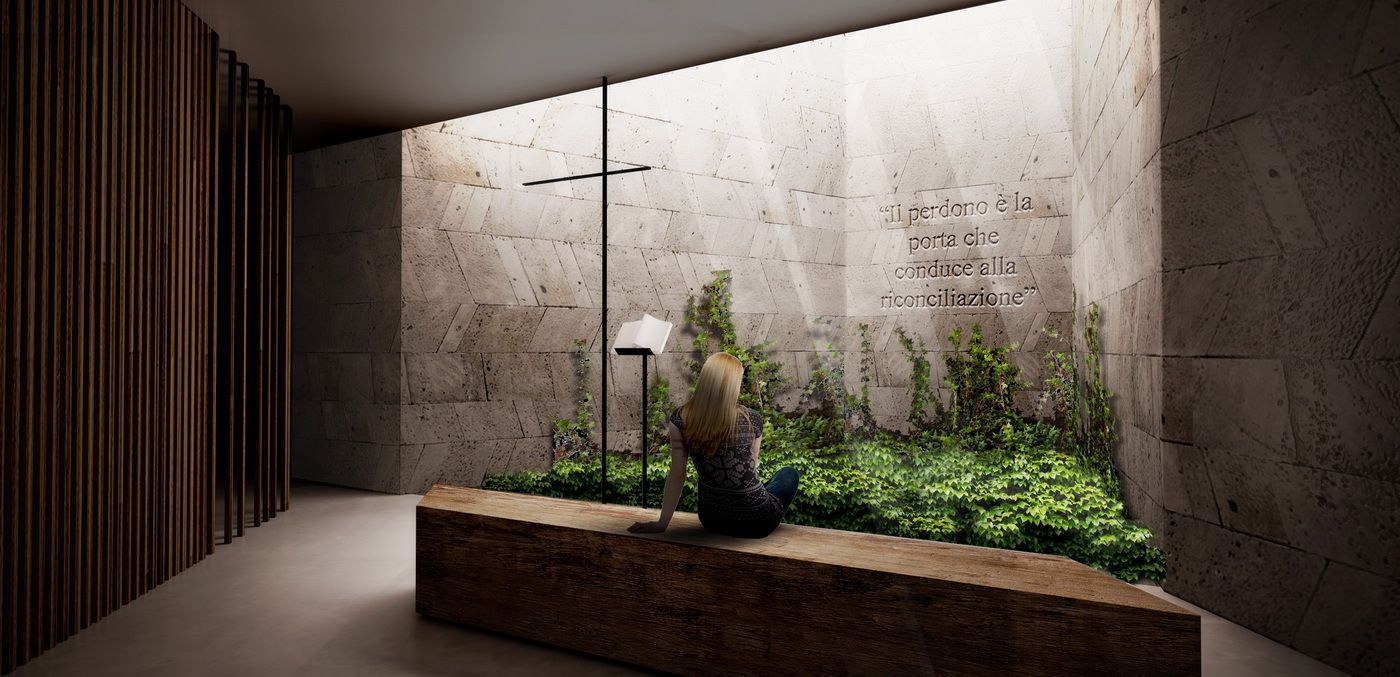“The True Church can never fail. For it is based upon a rock.”
– Hippopotamus, T.S. Eliot
Some of the most important spaces in the history of mankind lie within a few exquisite specimens of sacred architecture. And how can one forget churches, when the discussion is about sacred spaces. The list of these overwhelming worship spaces is diverse and substantial. So, here is another concept belonging to this epochal category of architecture.
Studio Kuadra’s design was shortlisted as one of the winning entries for the New Redemptoris Mater Church Open competition. Organized with assistance from the National Service and selected by the Monreale Diocese, this design has been finalized for the church at Cinisi, Italy. The winning entry not only reflects all the vital aspects of a sacred space but also challenges the conventional notion of a church and its formal appearance.
The renders revealed by Studio Kuadra portray a non-orthogonal monolith centered into a vast landscape. The stone cladding accentuates the solidity and massiveness of this church, making it distinctly prominent against its subtle sloping backdrop. Also the backdrop indicates the presence of underground spaces, which are lit and ventilated by transparent light wells opening into the garden. Furthermore, a bell tower in the front; another traditional element of church typology, shoots upwards as strikingly as the church itself. Unlike a massive bell, one can spot an array of little and large bells suspended at the top of the tower.
Though the form of the church in these renders is very contradictory to a typical church, the essence of sacred spaces such as the nave and apse is connoted by a typical presence of light. This version of nave explains how an entire space visually culminates onto an idol of Christ. The overlapping walls allow a continuous band of light gleaming along the hall’s periphery. Behind Jesus Christ’s relief, there lies an abstract pattern of punctures in the shape of a cross. These add a divine halo-like touch. Apart from these little details, there’s a minimalist version of Baptistery and a confession chamber too.
Here, the design of the church intends to enrich the journey of a churchgoer through sequential experiences. For anyone who approaches this church, the courtyard acts as a welcoming space. Soon after one enters into the courtyard, there lies a figurine of Virgin Mary. Other Christian symbols such as cross shaped slits, then direct one towards the assembly hall. If looked upon in terms of circulation, the journey advances towards the descending light. These transport any human into a transcendental realm which is detached from the mundane exteriors. A series of transparent spaces overlooking the sunken planters and side courts brings back the flavor of exteriors within the built form.
There is distinct division of the site, in terms of areas of religious importance segregated from areas of social importance. Hence the amenities such as the play area, parking and other gathering spaces are located farther from the monolithic built. With accessibility being one of the top priorities, most of the circulation gradually unfolds through ramps and pedestrian friendly walkways.
For now, these 3d visuals convincingly portray the overwhelming nature of spaces within the church. These spatial qualities may or may not translate exactly as intended, but the idea of a church as different as this one surely interests one.
Architects: Studio Kuadra
Design Team: Andrea Grottaroli, Roberto Operti, Manuel Giuliano, Giorgia Angonova Menardi, Ivan Sordello, Claudio Martini, Andrea Carlevaris, Gian Piero Tuozzo, Mattia Galliano, Francesco Rovera
Artist: Gabriele Garbolino, Fabio Narducci
Liturgist: Father Francesco Mollo
Project Year: 2015
Photographs: Courtesy of Studio Kuadra
Exterior Rendered View. Image Courtesy of Studio Kuadra
Exterior Rendered View. Image Courtesy of Studio Kuadra
Exterior Rendered View. Image Courtesy of Studio Kuadra
Exterior Rendered View. Image Courtesy of Studio Kuadra
Courtyard Rendered View. Image Courtesy of Studio Kuadra
Interior Rendered View. Image Courtesy of Studio Kuadra
Interior Rendered View. Image Courtesy of Studio Kuadra
Interior Rendered View. Image Courtesy of Studio Kuadra
Interior Rendered View. Image Courtesy of Studio Kuadra
Interior Rendered View. Image Courtesy of Studio Kuadra
Interior Rendered View. Image Courtesy of Studio Kuadra


